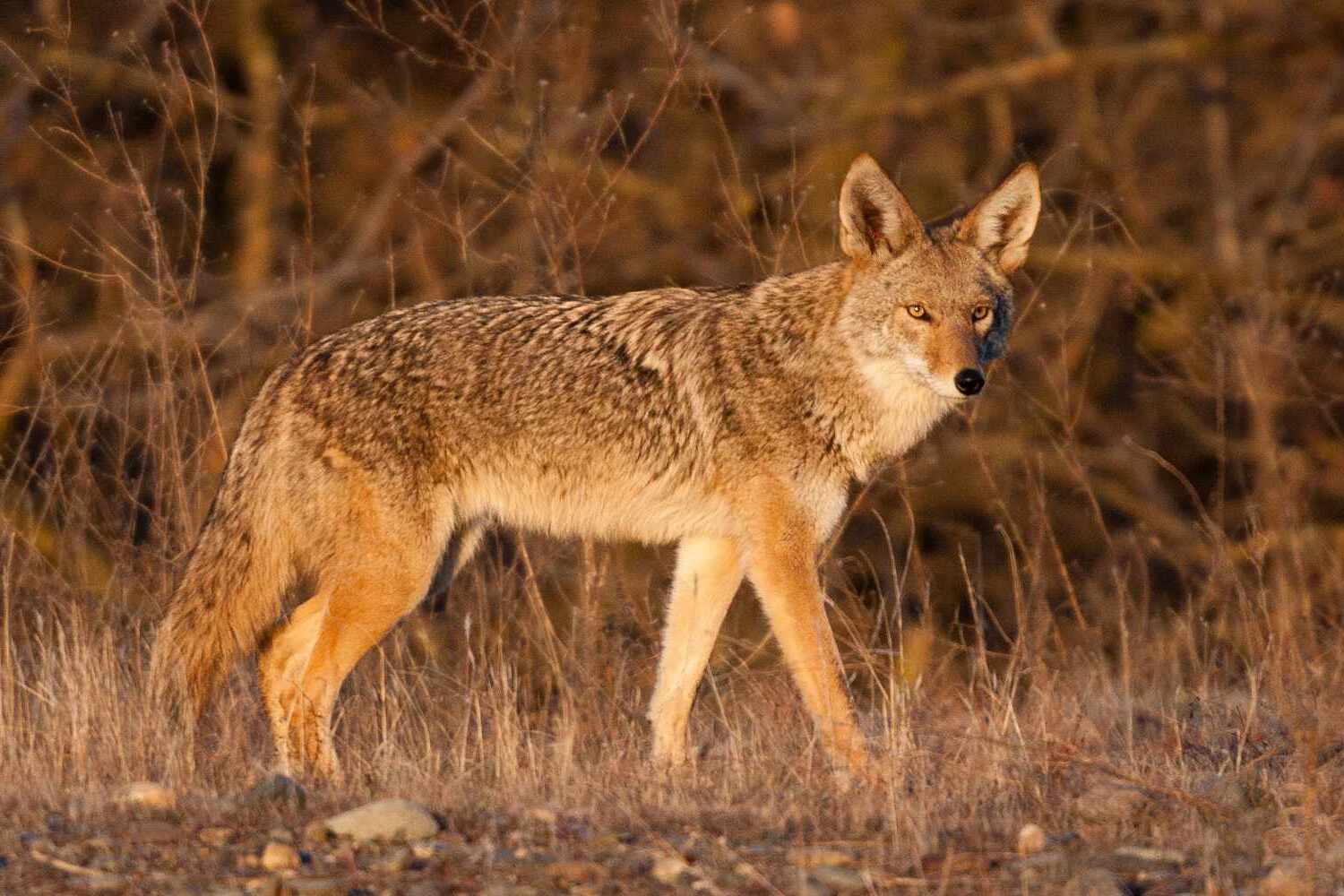
Ever wondered about those clever canines that roam the wilds of North America? Yes, I'm talking about coyotes, those adaptable and mysterious creatures that have sparked curiosity and folklore alike. Coyotes are fascinating animals, each with a story as unique as their howls under the moonlit sky. Whether you're a budding biologist, a wildlife enthusiast, or just plain curious, there's something undeniably intriguing about these members of the dog family. From their surprising diet to their incredible adaptability, coyotes are full of surprises. Ready to have your mind blown by some amazing coyote facts? Let's dive into the world of these captivating creatures and uncover what makes them such a remarkable topic for young nature enthusiasts.
Key Takeaways:
- Coyotes are adaptable canines native to North America, thriving in various environments, including urban areas. They communicate through vocalizations and body language, and their omnivorous diet and family structure contribute to their survival.
- Despite their complex relationship with humans, coyotes are generally shy and elusive animals. Their remarkable adaptability and ability to thrive in changing environments make them masters of survival and a vital part of the ecosystem.
Understanding Coyotes: Nature's Adaptable Canines
Coyotes, often symbols of the American Southwest, have a reputation for being cunning and adaptable. These creatures are part of the dog family, closely related to wolves and foxes. Their adaptability allows them to thrive in a variety of habitats, from deserts to urban areas.
-
Coyotes are native to North America and have expanded their range from Central America to the northern regions of Canada and Alaska. This expansion showcases their adaptability to different environments.
-
Unlike many other predators that have seen their populations decline due to human expansion, coyote numbers have actually increased. Their ability to live close to towns and cities is a key factor in this growth.
Coyote Communication: How They Talk
Coyotes are known for their vocalizations, which can include a range of sounds from howls to barks and yips. These sounds serve various purposes, from signaling their presence to communicating with other coyotes.
-
A unique aspect of coyote communication is the "group howl." This vocalization can make a small group sound like a much larger one, which may deter predators or competitors from entering their territory.
-
Coyotes also use body language, such as tail positions and facial expressions, to communicate with each other. This non-verbal form of communication is crucial for maintaining social bonds and hierarchy within a pack.
Coyote Diets: Omnivores in the Wild
Coyotes have a diverse diet that allows them to survive in a wide range of environments. They are omnivores, meaning they eat both meat and vegetation.
-
Their diet primarily consists of small mammals like rabbits and rodents, but they will also eat fruits, vegetables, and even garbage if they live near humans. This opportunistic feeding behavior helps them adapt to various habitats.
-
In some areas, coyotes have been known to form temporary alliances with badgers. While coyotes can chase down prey that tries to escape, badgers can dig after prey that hides underground. This teamwork allows both species to enjoy a more successful hunt.
Coyote Families: Social Structure
Coyotes form family units, often referred to as packs. These packs are usually made up of a breeding pair and their offspring, though the size and structure can vary.
-
The breeding pair forms a strong bond and typically mates for life. This loyalty contributes to the stability of the pack and helps in raising their young.
-
Coyote pups are born blind and depend entirely on their parents for protection and nourishment. Both parents, and sometimes older siblings, play a role in caring for the young, teaching them how to hunt and survive in the wild.
Coyotes and Humans: A Complex Relationship
The relationship between humans and coyotes has been complex, marked by conflict and fascination. As coyotes have become more common in urban areas, interactions with humans have increased.
-
Coyotes are often seen as pests by farmers and ranchers because they can prey on livestock. However, they also play a crucial role in controlling rodent populations, which can benefit agricultural communities.
-
In urban settings, coyotes may pose a risk to pets, but attacks on humans are extremely rare. Education on how to coexist with coyotes, such as securing trash and not feeding them, is vital for reducing conflicts.
-
Coyotes have been featured in Native American mythology and folklore, often portrayed as tricksters. This cultural representation highlights their intelligence and adaptability, traits that have allowed them to survive and thrive alongside humans.
-
Despite their reputation, coyotes are generally shy and elusive animals. They prefer to avoid humans and will usually flee rather than confront people.
Coyotes: Masters of Adaptation
Coyotes' ability to adapt to changing environments and circumstances is perhaps their most remarkable trait. This adaptability has allowed them to expand their range and increase their numbers, even as other species face challenges.
-
Climate change and habitat destruction have forced many species into decline, but coyotes have shown a remarkable ability to adjust. Their flexibility in diet, habitat, and behavior has been key to their success.
-
Urban coyotes have learned to navigate traffic, avoid human encounters, and exploit food sources in cities. This urban adaptation is a testament to their intelligence and survival skills.
-
Conservation efforts for coyotes focus on understanding their role in the ecosystem and promoting coexistence with humans. By appreciating the coyote's adaptability and ecological importance, we can learn to live alongside them more harmoniously.
A Final Howl: Coyote Facts Unleashed
Coyotes, those clever creatures of the wild, have shared their stories with us today. From their surprising adaptability to urban environments to their unique social structures, we've uncovered truths that bring us closer to understanding these often misunderstood animals. Coyotes aren't just characters in tales and legends; they're vital parts of ecosystems across North America. Their presence reminds us of nature's resilience and the intricate connections between species. For young nature enthusiasts, these 15 cool coyote facts aren't just trivia—they're invitations to explore, to learn, and to foster a deeper respect for wildlife. As we close this chapter, remember that every creature has its tale, waiting to be told. So, keep your curiosity wild and your spirit ready for more adventures in the great outdoors.
Frequently Asked Questions
Was this page helpful?
Our commitment to delivering trustworthy and engaging content is at the heart of what we do. Each fact on our site is contributed by real users like you, bringing a wealth of diverse insights and information. To ensure the highest standards of accuracy and reliability, our dedicated editors meticulously review each submission. This process guarantees that the facts we share are not only fascinating but also credible. Trust in our commitment to quality and authenticity as you explore and learn with us.


